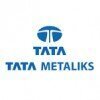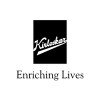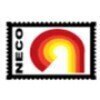Filter interviews by
Slr Metaliks Fire & Safety Officer Interview Questions, Process, and Tips
Slr Metaliks Fire & Safety Officer Interview Experiences
1 interview found
I applied via Company Website and was interviewed in Oct 2021. There was 1 interview round.
Interview Questionnaire
6 Questions
- Q1. What Type of fire extinguisher
- Ans.
There are different types of fire extinguishers for different types of fires, such as water, foam, CO2, dry powder, and wet chemical.
Water fire extinguishers are suitable for Class A fires involving solid materials like wood, paper, and textiles.
Foam fire extinguishers are effective for Class A and B fires, which involve flammable liquids like petrol and oil.
CO2 fire extinguishers are used for Class B and electrical fi...
- Q2. What is fire triangle
- Ans.
The fire triangle is a model that illustrates the three elements necessary for a fire to occur: fuel, heat, and oxygen.
The fire triangle consists of three components: fuel, heat, and oxygen.
Fuel refers to any material that can burn, such as wood, paper, or gasoline.
Heat is the energy required to raise the temperature of the fuel to its ignition point.
Oxygen is necessary for the combustion process to occur.
Removing any ...
- Q3. What is the cooling method
- Ans.
The cooling method in fire and safety involves the use of water, foam, or gas to reduce the temperature and extinguish the fire.
Water is commonly used as a cooling method in firefighting, as it absorbs heat and cools down the fire.
Foam is another effective cooling agent, as it forms a blanket over the fire and prevents oxygen from reaching it.
In some cases, gases like carbon dioxide or halon are used to displace oxygen...
- Q4. What is meaning of nfpa
- Ans.
NFPA stands for National Fire Protection Association.
NFPA is a non-profit organization that develops and publishes fire safety codes and standards.
It provides guidelines for fire prevention, protection, and suppression.
NFPA codes are widely adopted and used by fire departments, building owners, and safety professionals.
Examples of NFPA codes include NFPA 101 (Life Safety Code), NFPA 70 (National Electrical Code), and N...
- Q5. Classification of fire
- Ans.
Fires are classified based on the type of fuel involved and the appropriate extinguishing methods.
Fires are classified into five main classes: Class A, Class B, Class C, Class D, and Class K.
Class A fires involve ordinary combustible materials like wood, paper, and cloth.
Class B fires involve flammable liquids or gases like gasoline, oil, and propane.
Class C fires involve energized electrical equipment.
Class D fires in...
- Q6. What is safety
- Ans.
Safety refers to the measures and precautions taken to prevent accidents, injuries, and hazards in order to protect individuals and property.
Safety involves identifying and assessing potential risks and hazards.
It includes implementing preventive measures and safety protocols.
Safety also involves providing proper training and education to individuals.
Regular inspections and maintenance are essential for ensuring safety...
Interview Preparation Tips
Top trending discussions






Interview questions from similar companies

I applied via Naukri.com and was interviewed before Apr 2020. There were 3 interview rounds.
Interview Questionnaire
2 Questions
- Q1. What is your work experience
- Q2. What is your role
Interview Preparation Tips

Interview Questionnaire
3 Questions
- Q1. Knowledge component
- Q2. Knowledge electronic devices
- Q3. Life discission

(2 Questions)
- Q1. Handling loss of RMHS materials
- Ans.
Handling loss of RMHS materials involves proper inventory management, tracking systems, and security measures.
Implement a robust inventory management system to track all RMHS materials
Regularly conduct audits to ensure accuracy of inventory records
Utilize security measures such as surveillance cameras, access control systems, and restricted access areas
Train staff on proper handling and storage procedures to prevent lo...
- Q2. Blast furnace phosphorus reaction
(2 Questions)
- Q1. Self introduction
- Q2. Salary discussion
Interview Preparation Tips

(4 Questions)
- Q1. Electrical related. Question will
- Q2. Already 5 year experience in Electrical field
- Q3. Get electrical project ideas for in house improvements
- Ans.
Some electrical project ideas for in house improvements include installing smart home technology, upgrading lighting fixtures, and adding solar panels.
Install smart home technology for energy efficiency and convenience
Upgrade lighting fixtures to improve aesthetics and energy efficiency
Add solar panels to reduce electricity costs and environmental impact
- Q4. Project planning: Develop the project plan and construction schedule
Sap pm and electrically

I applied via Approached by Company and was interviewed in Aug 2021. There were 3 interview rounds.

(1 Question)
- Q1. What percent of Alumina is best for sinter
- Ans.
The best percentage of Alumina for sintering depends on the specific material and desired properties.
The optimal percentage of Alumina for sintering can vary depending on the material being processed.
Generally, Alumina content in the range of 5-30% is common for sintering ceramics.
Higher Alumina content can lead to increased strength and hardness, but may also make the material more brittle.
Lower Alumina content may re...
(1 Question)
- Q1. Salary discussion

I applied via Referral and was interviewed before Apr 2021. There were 2 interview rounds.
(2 Questions)
- Q1. Tell me Something about You ?
- Q2. Why Should we Hire you ?
(3 Questions)
- Q1. What do you mean by Design Steps ?
- Ans.
Design steps refer to the process of creating a plan or blueprint for a product or system.
Identifying the problem or need
Researching and gathering information
Brainstorming and generating ideas
Creating sketches or prototypes
Testing and evaluating the design
Refining and finalizing the design
Implementing and producing the final product
- Q2. How you will be leader in new Product Development ?
- Q3. How you will do automation in our existing continuous process ?
- Ans.
I will analyze the process flow, identify repetitive tasks, and implement automation tools to streamline the process.
Analyze the current process flow
Identify repetitive tasks that can be automated
Select appropriate automation tools
Implement automation tools and test thoroughly
Monitor and optimize the automated process
Interview Preparation Tips
Skills evaluated in this interview

I applied via Walk-in and was interviewed in Oct 2023. There were 3 interview rounds.

(1 Question)
- Q1. By branch interview will conducted. Basic questions asked & some good interview can asked depth of the topic.
(1 Question)
- Q1. Branch / Department related questions

I applied via Approached by Company and was interviewed in Mar 2023. There were 4 interview rounds.

(1 Question)
- Q1. Previous company job responsibilities
(1 Question)
- Q1. What you can do for our company
(1 Question)
- Q1. Salary discussion

Engineer Interview Questions & Answers
SHYAM METALICS AND ENERGYposted on 16 Jul 2024
I applied via Referral and was interviewed in Jun 2024. There were 2 interview rounds.
(4 Questions)
- Q1. About yourself?
- Q2. About your work experience in previous company?
- Q3. Some technical questions about your job profile in previous company?
- Q4. Checking your knowledge in respective work field as well as in your core branch?
(2 Questions)
- Q1. Reason for job switch?
- Q2. Your Expectations in this company?
Slr Metaliks Interview FAQs
Tell us how to improve this page.
Slr Metaliks Interviews By Designations
- Slr Metaliks Engineer Interview Questions
- Slr Metaliks Mechanical Maintenance Engineer Interview Questions
- Slr Metaliks Technician Interview Questions
- Slr Metaliks Manager - HR & Administration Interview Questions
- Slr Metaliks Assistant Manager Interview Questions
- Slr Metaliks Senior Technician Interview Questions
- Slr Metaliks Supervisor Interview Questions
- Slr Metaliks Shift Incharge Interview Questions
- Show more
Interview Questions for Popular Designations
- Fire & Safety Supervisor Interview Questions
- Safety Engineer Interview Questions
- Safety Manager Interview Questions
- Senior Safety Officer Interview Questions
- Safety Officer Interview Questions
- Senior Safety Engineer Interview Questions
- Safety Supervisor Interview Questions
- Fireman and Safety Interview Questions
- Show more
Slr Metaliks Fire & Safety Officer Interview Process
based on 1 interview
Interview experience
Interview Questions from Similar Companies
|
Engineer
92
salaries
| ₹1.8 L/yr - ₹5 L/yr |
|
Senior Engineer
80
salaries
| ₹2.7 L/yr - ₹7 L/yr |
|
Executive
34
salaries
| ₹4 L/yr - ₹8.4 L/yr |
|
Deputy Manager
32
salaries
| ₹5 L/yr - ₹12 L/yr |
|
Junior Engineer
29
salaries
| ₹2 L/yr - ₹5 L/yr |

SHYAM METALICS AND ENERGY

Jai Balaji Group

Electrotherm

Welspun Corp
- Home >
- Interviews >
- Slr Metaliks Interview Questions >
- Slr Metaliks Fire & Safety Officer Interview Questions













